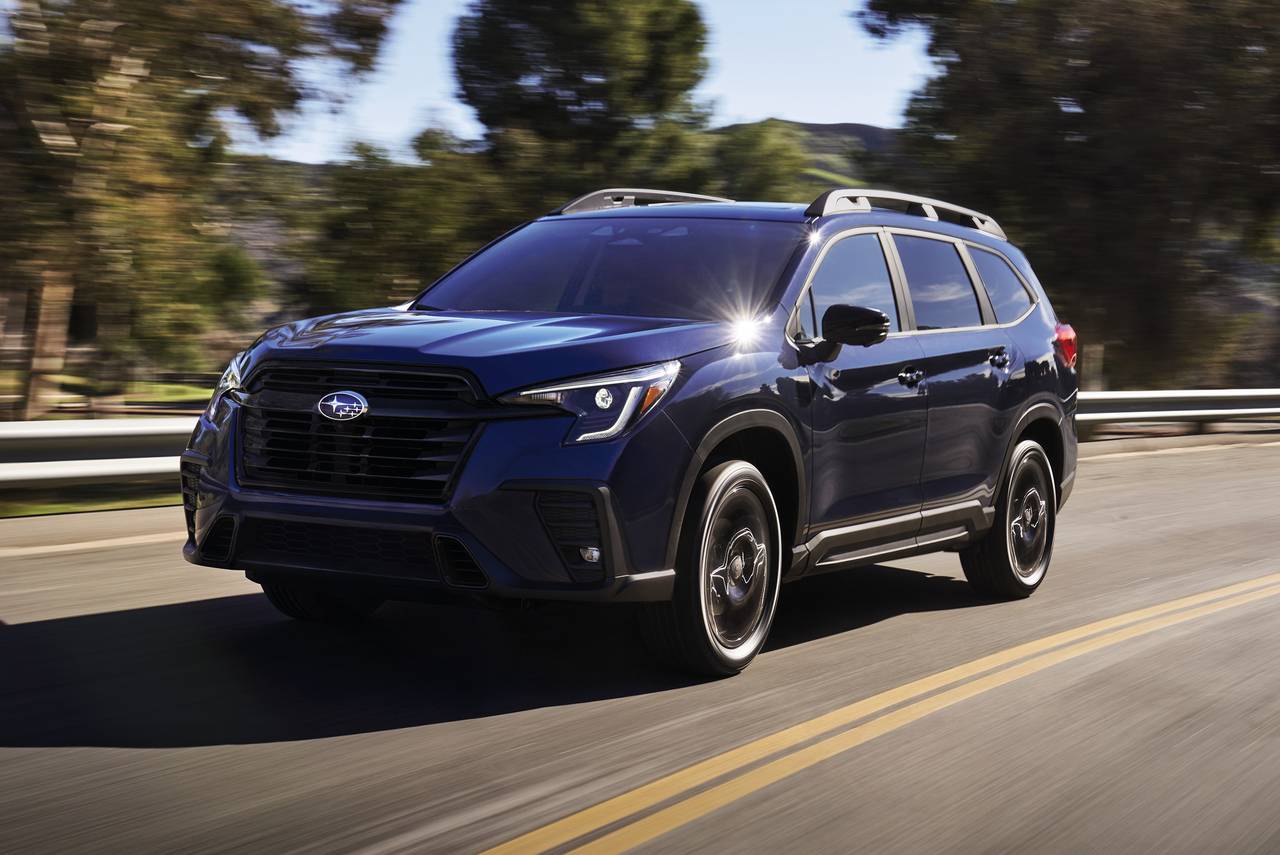When it comes to vehicle safety, especially in the SUV segment, rollover risk remains one of the most critical — and least understood — concerns for drivers.
While today’s SUVs have evolved drastically from the top-heavy behemoths of the early 2000s, rollover accidents still account for a disproportionately high number of severe injuries and fatalities on the road. That’s not just a statistic — it’s a wake-up call for anyone who puts family, passengers, or even themselves in the driver’s seat of one of these high-riding machines.
SUVs offer undeniable appeal: a commanding view of the road, spacious interiors, and rugged capability. But with that elevated ground clearance and higher center of gravity comes a tradeoff — stability, especially during sudden maneuvers or high-speed collisions.
In fact, according to data from the National Highway Traffic Safety Administration (NHTSA), rollovers account for nearly 35% of all deaths from passenger vehicle crashes, even though they occur in only a small percentage of accidents overall.
That’s why understanding which SUVs are statistically safer — and which ones lag behind — matters more than ever. Whether you’re shopping for a new ride or just want to be better informed about the vehicle you’re already driving, the risk of rollover shouldn’t be swept under the rug by marketing fluff or badge loyalty.
In this article, we’ve dug into the data to bring you 5 SUVs with the lowest rollover risk, based on crash-test ratings and real-world dynamics — and for the sake of transparency, we’re also revealing 5 SUVs with the highest rollover risk. It’s not just about calling out the bad and praising the good — it’s about helping you make decisions with open eyes, grounded in facts, not hype.
1. Subaru Ascent
The Subaru Ascent scores among the best in rollover prevention, thanks to its low center of gravity for a three-row SUV and standard all-wheel drive.
The NHTSA gives it a rollover resistance rating of 15.5%, one of the lowest in the midsize SUV class. Its symmetrical AWD system also enhances traction during evasive maneuvers.
The midsize three-row crossover segment is saturated with contenders, and the Subaru Ascent finds itself in a fiercely competitive field. It goes up against standouts like the refined Mazda CX-90, known for its sharp driving dynamics; the versatile Kia Telluride, which continues to deliver exceptional value; and the long-standing Ford Explorer, which enjoys a loyal customer base built over decades.
Despite this crowd, the Ascent carves out its own identity by channeling Subaru’s signature character into a package that includes standard all-wheel drive, a strong suite of safety features, and seating for up to eight passengers.
However, its most glaring weakness is the 260-hp turbocharged flat-four engine, which is paired with a continuously variable automatic transmission (CVT). The powertrain is often noisy and feels sluggish, as though it needs some coaxing to perform.
That said, if you can overlook the lackluster performance, the Ascent rewards you with spacious and comfortable seating in the first two rows. The third row, however, is best suited for kids or very flexible adults. Fuel efficiency is another strong point, with the Ascent achieving 28 mpg in our 75-mph highway test — beating its EPA highway estimate by 2 mpg.
For 2025, Subaru has made some notable changes to the Ascent lineup. The base model has been dropped, and the range now begins with the Ascent Premium, which comes well-equipped right out of the gate.
Standard features on the Premium trim include blind-spot detection with lane change assist, rear cross-traffic alert, emergency stop assist, wireless Apple CarPlay and Android Auto, and USB ports in every row.
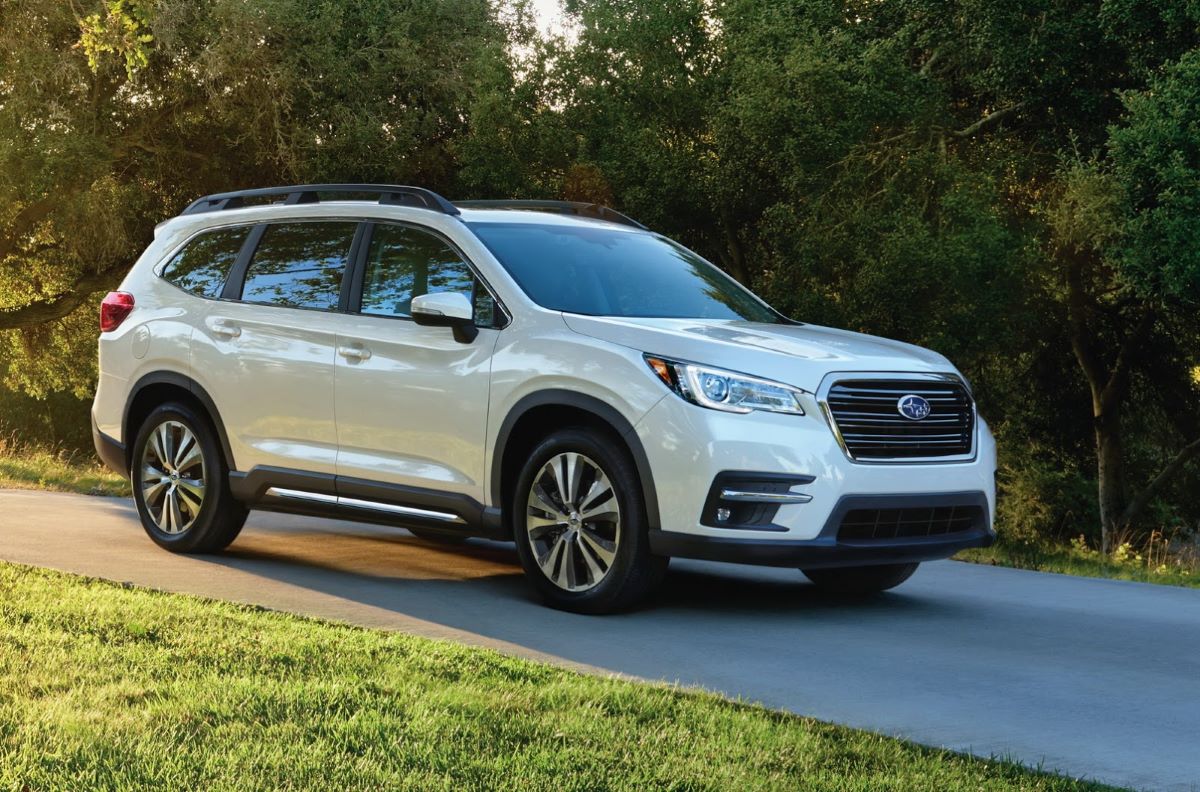
Subaru also introduces a new Bronze Edition that adds bronze-colored wheels and matching accents for a more upscale appearance. Additionally, a new top-tier Onyx Edition Touring trim joins the lineup, catering to buyers seeking the highest level of features and finishes.
Pricing for the 2025 Subaru Ascent starts at $41,415 and goes up to $53,470, depending on the trim and selected options. Among the available trims, the Premium stands out as the best value proposition.
It not only delivers slightly better EPA fuel economy than the higher trims but also includes desirable amenities such as heated front seats, a power-adjustable driver’s seat, USB ports throughout the cabin, a rear camera with a washer, adaptive cruise control, and rear automated emergency braking — all included as standard equipment.
Powering the Ascent is Subaru’s 260-horsepower turbocharged 2.4-liter four-cylinder engine, mated to a CVT. This all-wheel-drive setup makes the Ascent well-suited for year-round family road trips, whether in rain, snow, or rough terrain.
However, the engine offers only modest acceleration and tends to be noisy under stress, particularly when towing or accelerating hard. The CVT, while generally smooth and responsive, adds to the cabin noise under load.
For those who want more engagement, the steering wheel-mounted paddle shifters provide a measure of manual control over the transmission. The Ascent’s throttle response can feel abrupt at low speeds, especially in stop-and-go traffic, and takes some time to get used to.
On the ride and handling front, the Ascent performs admirably. Even with 20-inch wheels on our test vehicle, the ride quality was composed, absorbing road imperfections and harsh bumps with ease. Unfortunately, the cabin is not immune to wind and road noise, which becomes quite noticeable at highway speeds.
While the Ascent doesn’t deliver the same driving excitement as the Mazda CX-90, it remains composed and predictable in everyday driving situations. The steering is light and precise, offering confident feedback in quick maneuvers while remaining steady and relaxed at higher speeds.
Also Read: Top 10 Most Reliable Used Cars You Can Buy for Under $10,000 in 2025
2. Tesla Model Y
The Model Y boasts a surprisingly low rollover risk of 7.9% according to NHTSA crash testing, one of the best figures ever recorded for any SUV.
The electric crossover’s battery placement under the floor significantly lowers its center of gravity, making it exceptionally resistant to tip-overs during sharp turns or collisions.
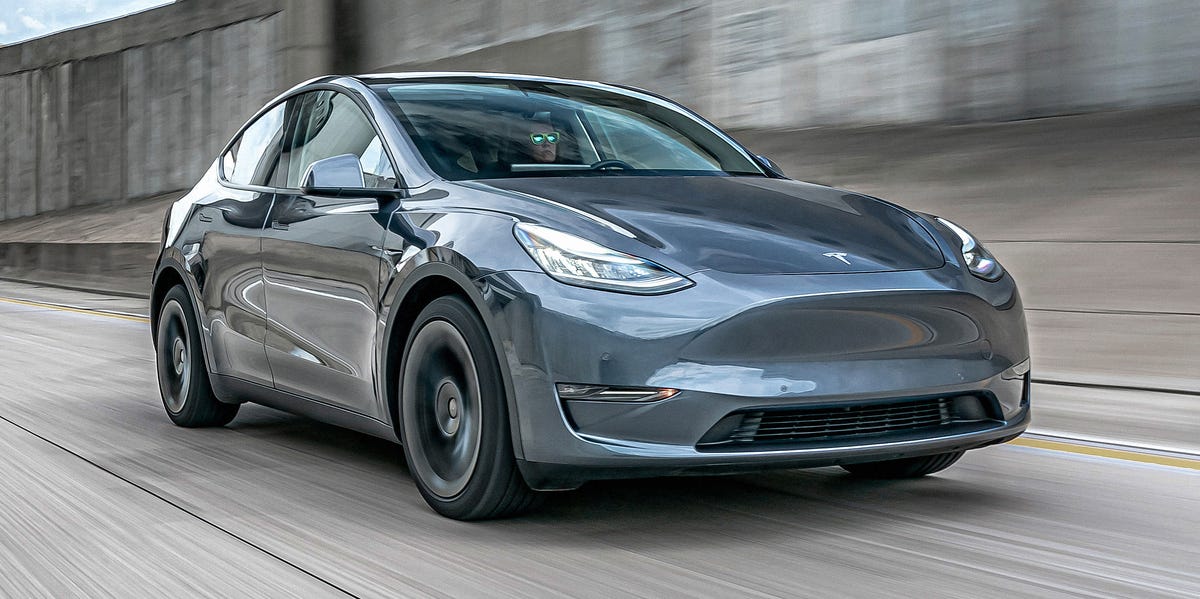
The updated SUV, officially named the New Model Y and referred to internally by Tesla as “Juniper,” is most immediately identifiable by its redesigned headlights and taillights. These changes, along with new full-width accent lighting, give the Model Y a striking appearance after dark.
This refreshed design theme carries into the cabin, where new ambient lighting elements and a broader application of higher-quality materials elevate the interior’s look and feel. Ventilated front seats are now finally offered, and rear-seat passengers benefit from a new 8-inch touchscreen that allows them to play games.
Beneath the surface, Tesla has introduced improvements aimed at reducing cabin noise from the outside, while a reworked suspension is intended to smooth out road imperfections without sacrificing the sporty handling the Model Y is known for.
3. Volvo XC90
Volvo’s commitment to safety continues with the XC90. Featuring Roll Stability Control and an exceptionally strong roof structure, the XC90 earns a 15.9% rollover risk rating.
The SUV’s advanced traction systems and vehicle dynamics architecture contribute to its stable handling on curves and uneven terrain.
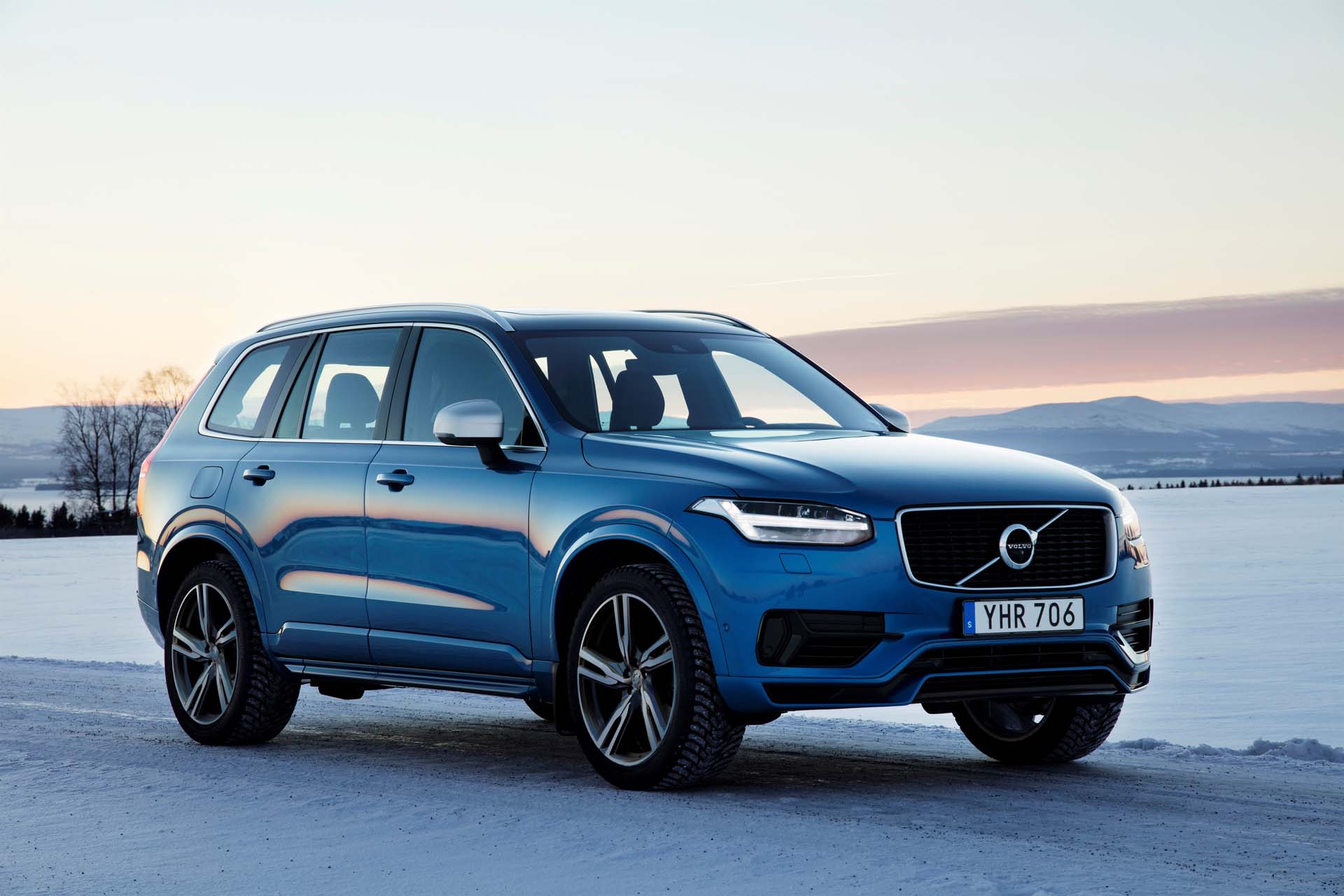
The 2025 XC90 remains Volvo’s long-standing three-row SUV. This generation has been on the market in essentially the same form for eight years, and it’s beginning to show its age. Even so, it continues to showcase the core strengths that define Volvo.
The XC90 boasts a beautifully designed interior, roomy accommodations in the first two rows, and a generous list of standard driver assistance technologies. It also includes an efficient plug-in hybrid option, which lets you travel a short distance solely on electric power before seamlessly transitioning to its conventional gasoline engine.
Also Read: 10 Best Cars for Cost per Mile After 100,000 Miles
4. Audi Q5
Audi’s Q5 balances performance and safety, with a rollover risk rating of 16.4%. Its low stance, standard Quattro all-wheel drive, and stability control system combine to keep it planted during sudden maneuvers. It also received top marks from the IIHS for overall crashworthiness.
Despite being based on a design that’s now seven years old, the second-generation Audi Q5 still holds its own in the compact SUV segment. It may lack the oversized, flashy touchscreen displays that many newer competitors boast, but it remains nearly as advanced in terms of overall technology.
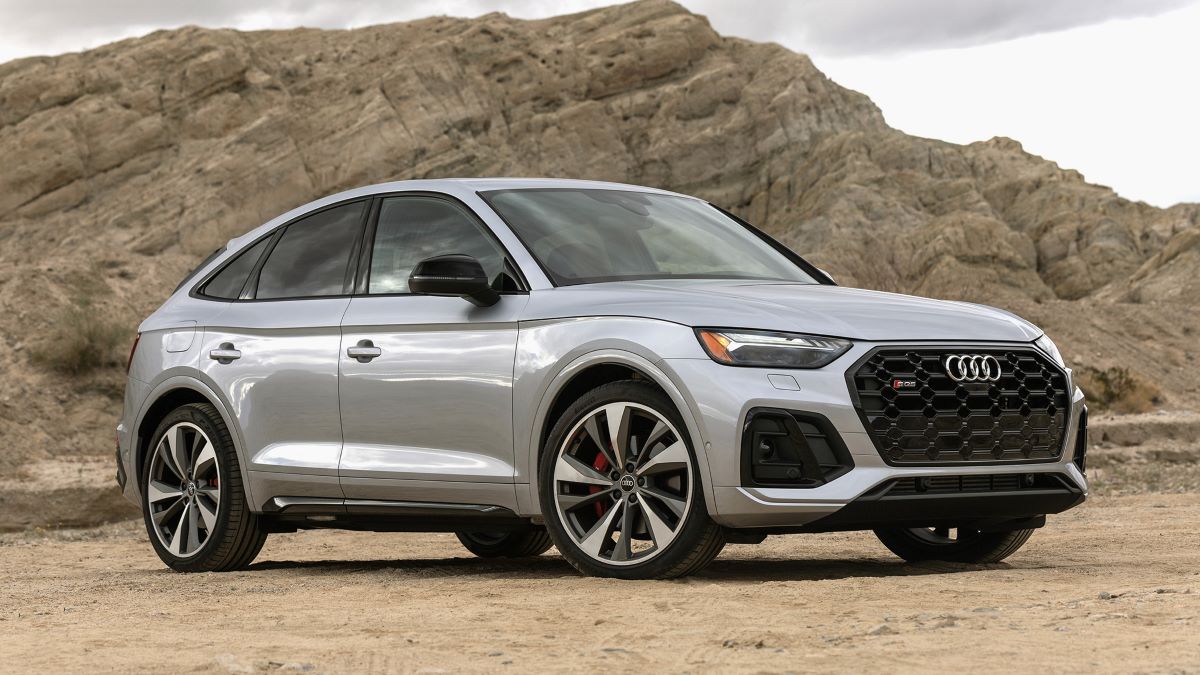
Inside, the cabin is both comfortable and crafted with an undeniable sense of quality, offering more interior space than you might expect. The driving experience is satisfying—if not entirely thrilling—particularly with the more powerful variant of the turbocharged four-cylinder engine, known as the 45 TFSI.
While the upcoming third-generation Q5 doesn’t drastically deviate from the current model’s proven formula, it takes a significant step forward in terms of technology and comes dressed in a bolder, more refined design. If that sounds appealing, we’d suggest holding out for it.
5. BMW X3
The X3 may be sporty, but it’s also stable. It has a 16.7% rollover rating, aided by a firm suspension setup and near-perfect weight distribution.
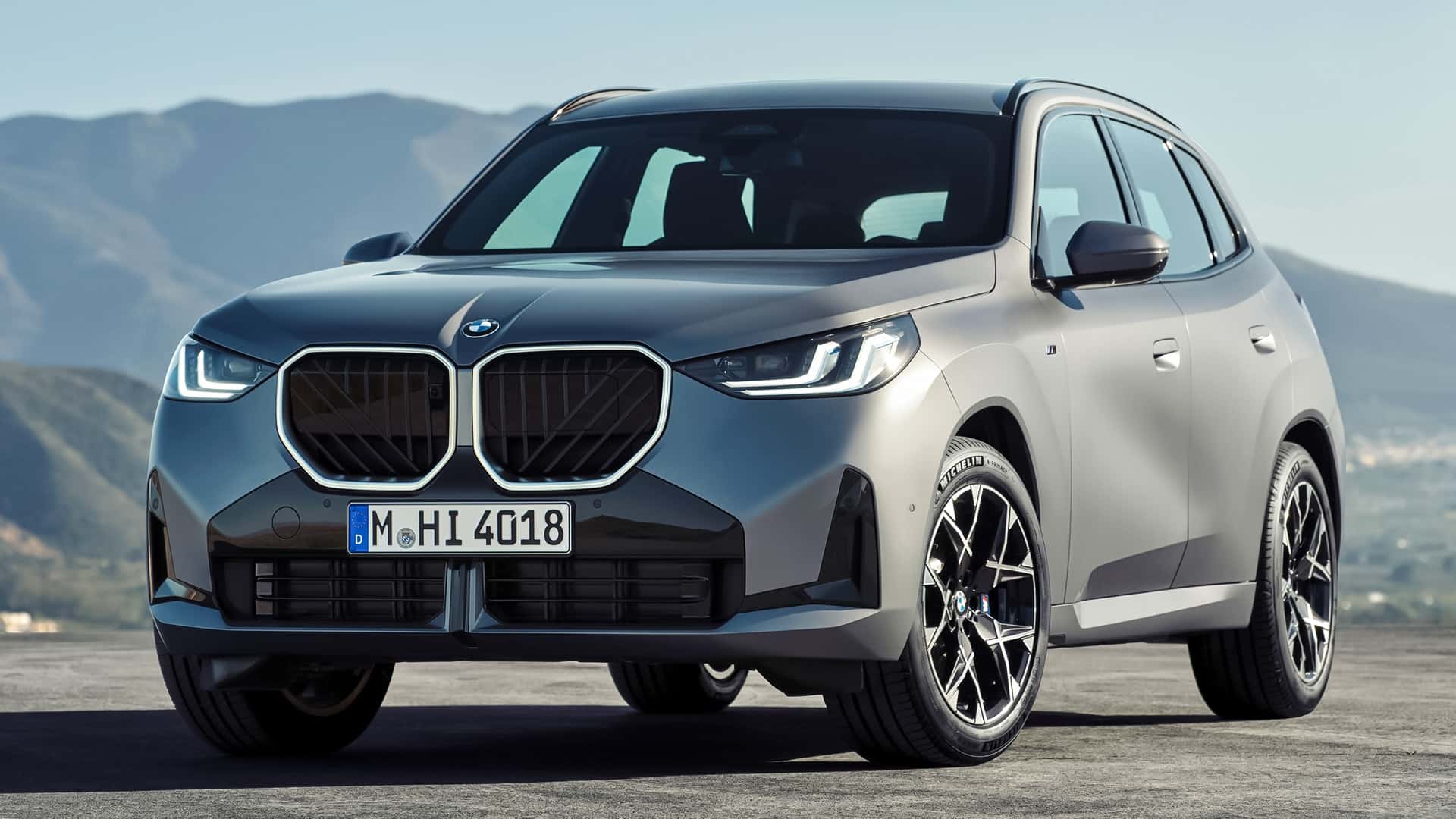
BMW’s Dynamic Stability Control and Cornering Brake Control systems further reduce the chances of a rollover by adjusting power and braking in real time.
When it launched in 2004, the BMW X3 played a pivotal role in shaping the compact luxury crossover segment—and it eventually became the brand’s best-selling model. Now, the fourth-generation 2025 X3 builds on that legacy with thoughtful, incremental enhancements that aim to refine the formula rather than overhaul it.
For 2025, all-wheel drive comes standard across the lineup, and the performance-oriented M40i has been succeeded by the newly badged M50. Technological updates are introduced with measured restraint, including expanded access to audio and video streaming services, plus a few gaming options to pass the time while parked.
Under the hood, the returning four- and inline-six-cylinder engines now feature mild-hybrid technology and benefit from a modest bump in power.
Meanwhile, a fully electric iX3 is also on the horizon, though it will ride on a separate platform and be sold alongside the new X3. As for a plug-in hybrid variant, it hasn’t been officially announced for the U.S. market just yet—but considering the country’s revived appetite for hybrids, it would be surprising if BMW left it out of the mix.
What remains unchanged is the X3’s refined balance of ride and handling, its tastefully executed luxury interior, and its position as a stylish, well-sized contender in one of the most competitive segments on the market.
SUVs With the Highest Rollover Risk
SUVs might be the kings of the road when it comes to space, presence, and versatility — but they’re not without their flaws. One of the most serious safety concerns that still haunts the segment? Rollover risk.
Despite all the tech upgrades, stability systems, and marketing promises, some SUVs are simply more prone to tipping over in sharp turns, emergency maneuvers, or high-speed crashes. And we’re not talking about obscure models, either — some popular, well-selling SUVs are on this list.
Rollover accidents are rare compared to other types of crashes, but when they happen, they tend to be far more deadly. According to the NHTSA, rollover crashes account for a third of all vehicle occupant fatalities, even though they make up a much smaller portion of total accidents. Translation: when an SUV rolls, the consequences can be brutal.
So, why do some SUVs have higher rollover risk than others? It often comes down to physics — a higher center of gravity, poor weight distribution, soft suspension, or outdated stability systems. But most drivers don’t know which models are more vulnerable until it’s too late.
In this article, we’re shining a light on SUVs with the highest rollover risk — based on government crash-test data and real-world safety ratings. No sugarcoating, no brand loyalty bias — just the facts. If you’re considering buying one of these vehicles, or you already drive one, it’s worth knowing where it stands when it comes to rollover performance.
1. Ford Explorer (Pre-2020 models)
Earlier generations of the Ford Explorer, especially those before the 2020 redesign, had a 24.6% rollover risk in NHTSA testing.
Despite being a popular family vehicle, its higher center of gravity and truck-like construction made it more prone to rollovers in emergency maneuvers.
Ford gave the sixth-generation Explorer a significant mid-cycle update in early 2024, five years after the model originally launched, and the 2025 model year ushered in several notable changes.
The Explorer, once America’s all-time best-selling SUV, received a well-timed facelift that reflected both customer feedback and Ford’s recognition that the vehicle needed refinement to stay competitive.
In the process, the automaker streamlined the lineup, cutting the number of available trims from seven to four. Along with the simplified range, Ford bolstered the Explorer’s value by adding more standard features across the board. These updates were intended to help maintain the model’s appeal and keep buyers interested in this three-row family SUV.

Up front, the 2025 Explorer displays different grille designs depending on the trim level. The ST and ST-Line versions feature a bold blacked-out grille accented with red badging, while the upscale Platinum trim stands out with a more refined honeycomb design that blends chrome and black elements.
Regardless of trim, all models share a similar lower bumper design with a slim, wide central air intake and side scoops housing the fog lights.
From the side, the Explorer continues to show off its cab-rearward proportions, a hallmark of its rear-wheel-drive platform. Ford highlighted this stance with a slightly downward-sloping roofline and a rising beltline.
To enhance its rugged persona, black moldings were added around the wheel arches. The ST and ST-Line trims are further distinguished by exclusive badging on the front fenders and tailgate, while the base Active trim and the luxurious Platinum model forgo these additional exterior identifiers.
2. Jeep Wrangler 2-Door
The 2-door Jeep Wrangler is built for off-road freedom, but that design comes with tradeoffs. Its high ground clearance and short wheelbase contribute to a 27.9% rollover risk the highest among modern SUVs tested by the NHTSA. Even with modern ESC systems, sharp turns at speed can lead to instability.
The 2023 Jeep Wrangler Sport 2-Door 4×4 is a rugged, compact SUV that starts at $32,990 and comes equipped with four-wheel drive as standard.
Under the hood, it’s powered by a 3.6-liter (220 cu in) regular unleaded V-6 engine, identified by engine code ERC. This engine uses a sequential multi-port fuel injection system and delivers 285 horsepower at 6400 rpm along with 260 lb-ft of torque at 4800 rpm. It comes with a regular-duty engine oil cooler, although the cooling system capacity is not specified.
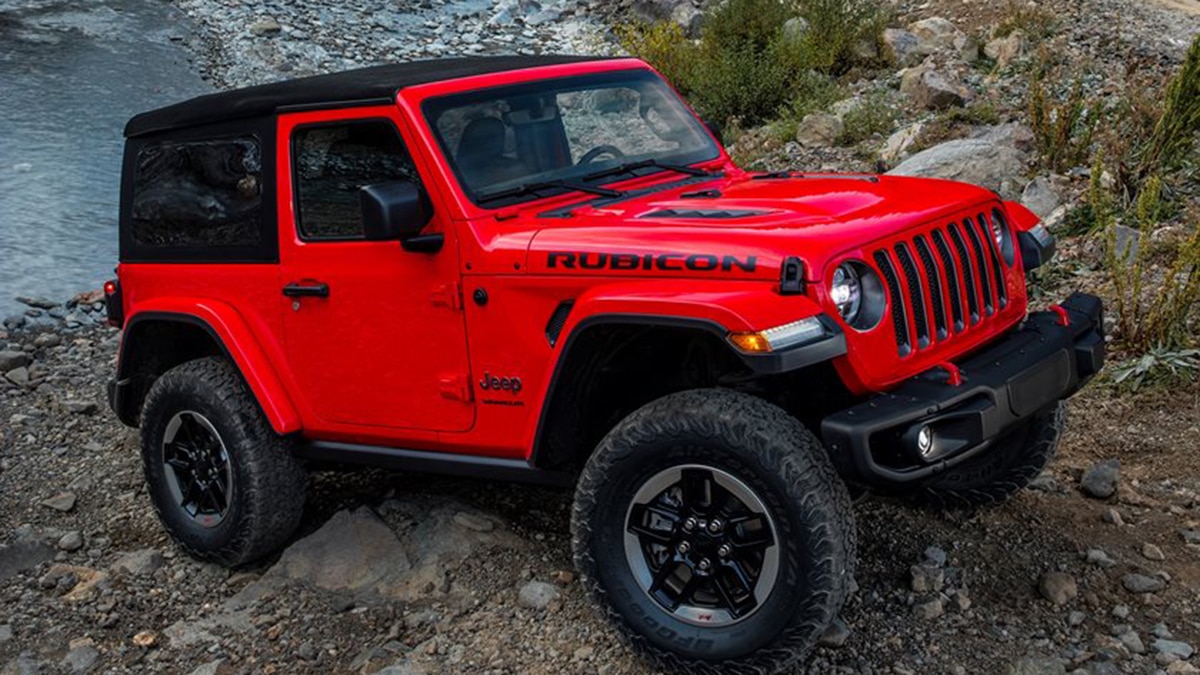
Mated to the engine is a 6-speed manual transmission with overdrive (transmission code DEM). The gear ratios are as follows: 5.13 for first gear, 2.63 for second, 1.53 for third, 1.00 for fourth, 0.81 for fifth, 0.72 for sixth, and 4.49 for reverse.
While the final drive axle ratio is not listed, the transfer case is a manual unit, though its gear ratios in both high and low range remain unspecified. Clutch size details are also not available.
In terms of efficiency and environmental impact, the Wrangler Sport 2-Door 4×4 delivers an EPA-estimated 20 mpg combined—17 mpg in the city and 25 mpg on the highway.
This translates to a driving range of approximately 297.5 miles in the city and up to 437.5 miles on the highway. Estimated CO₂ emissions come in at 8.9 tons per year based on 15,000 miles of annual driving. The EPA greenhouse gas score for this vehicle is currently not available.
3. Chevrolet Tahoe
The Tahoe’s size and truck-based frame add to its commanding presence, but they also increase rollover risk. With a 21.9% rating, it’s more vulnerable in abrupt lane changes or high-speed turns.
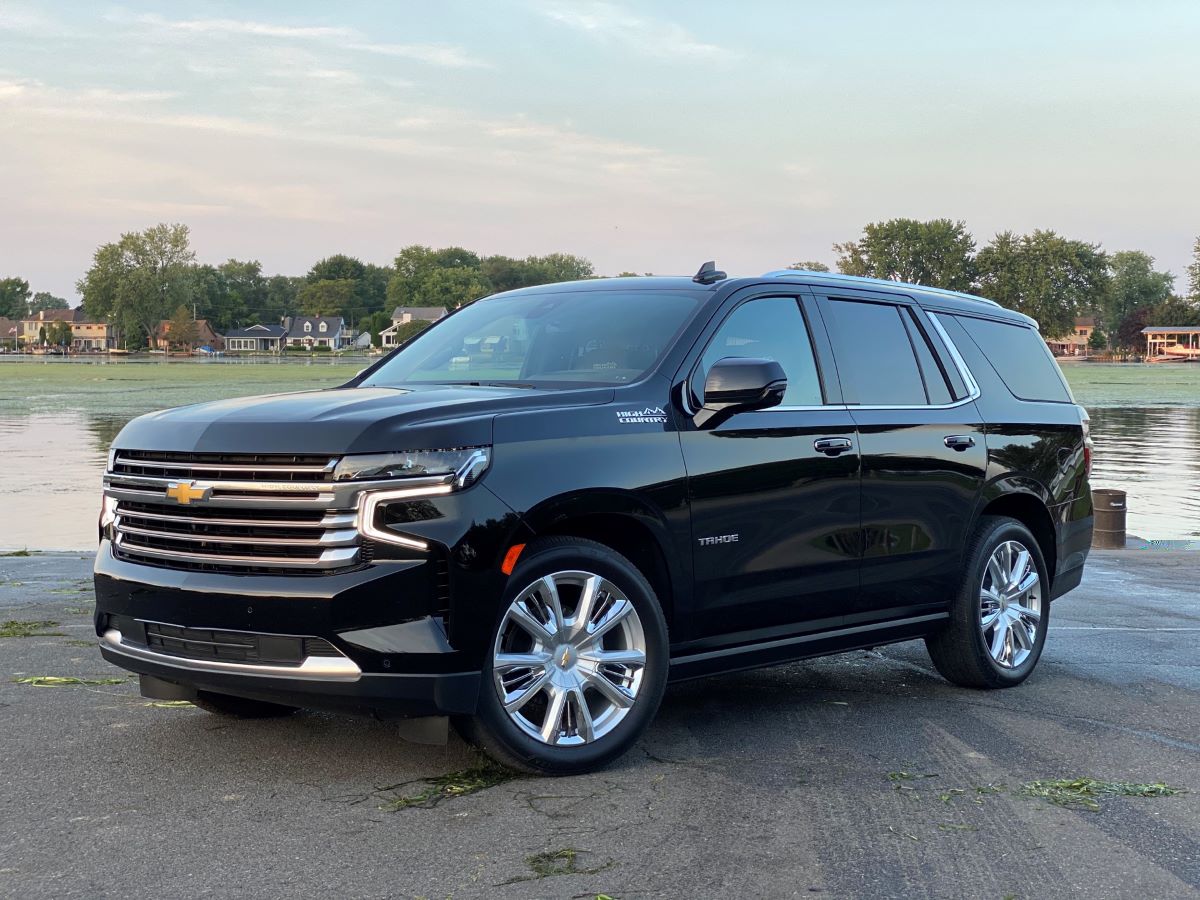
While newer models feature improved stability control, physics still play a limiting role in its handling. The previous-generation 4Runner was a solid vehicle, but it was consistently limited by its outdated V-6 engine and sluggish five-speed automatic transmission.
Toyota wisely corrected that for the new model, now equipping it with a turbocharged inline-four that produces 278 horsepower and 317 pound-feet of torque. This engine is mated to a more modern and responsive eight-speed automatic gearbox, significantly improving overall drivability.
To take things a step further, Toyota introduced the i-Force Max powertrain, which adds an electric motor positioned between the engine and transmission, powered by a battery pack mounted in the trunk floor.
This setup increases total system output to an impressive 326 horsepower and 465 pound-feet of torque. The result is noticeably quicker acceleration and stronger passing performance, along with a considerably smoother driving experience across the board.
Even with the modernized powertrain and fresh styling, the 4Runner retains its traditional body-on-frame construction, which it shares with the Tacoma pickup. That structure helps it maintain strong off-road credentials.
It comes equipped with a two-speed transfer case for low-range crawling and even features a locking rear differential for when the terrain gets really tough. These tools came in handy during our visit to an off-road park, where the 4Runner confidently conquered every challenge we threw at it without breaking a sweat.
4. Toyota 4Runner
The Toyota 4Runner remains a go-to for off-road capability, but it suffers from a high 24.6% rollover risk.
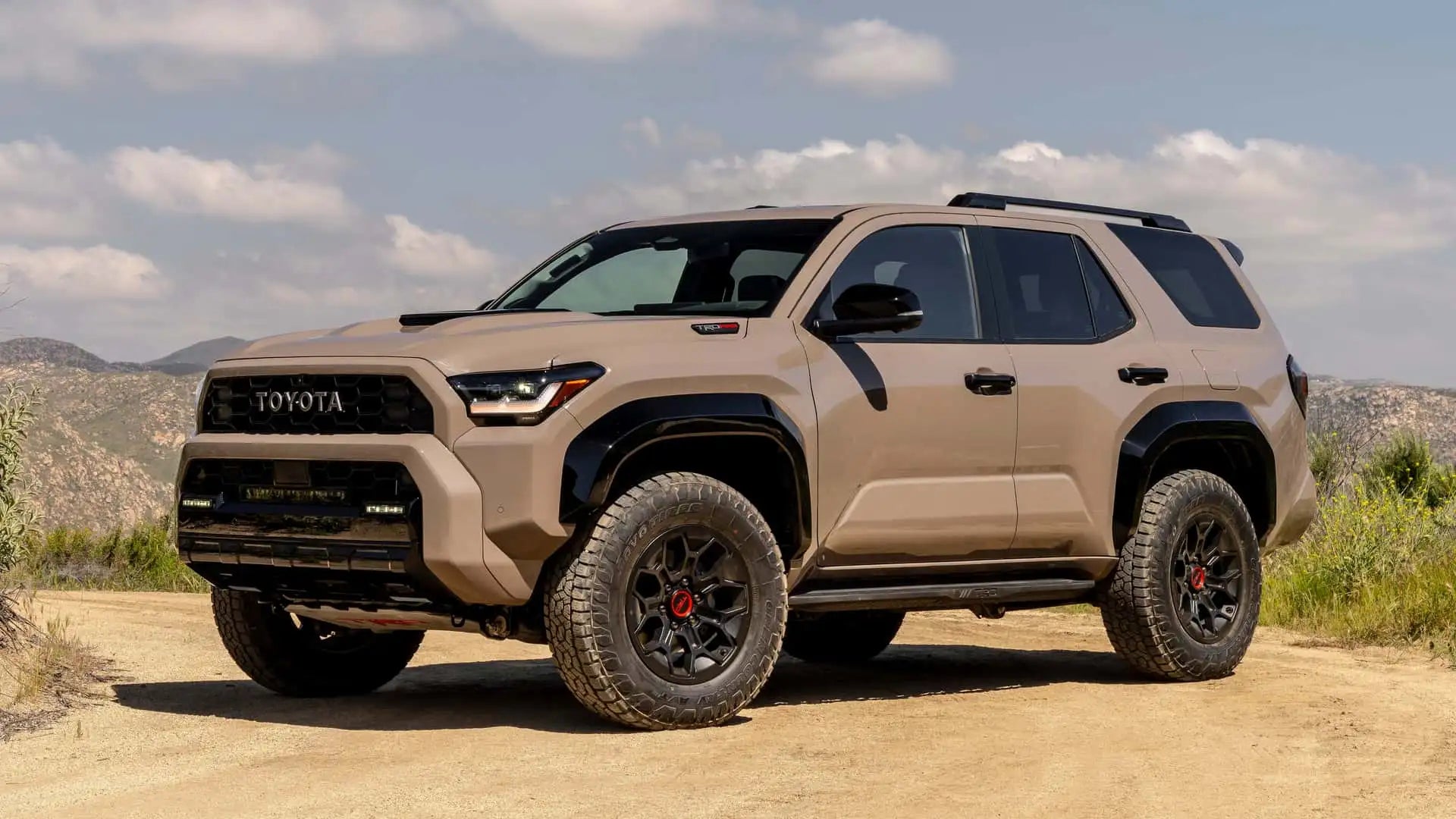
Built on a body-on-frame platform with substantial ground clearance, the 4Runner’s off-road strengths work against it in on-road safety metrics involving rollover resistance.
The previous-generation 4Runner was a solid vehicle, but it was consistently limited by its outdated V-6 engine and sluggish five-speed automatic transmission.
Toyota wisely corrected that for the new model, now equipping it with a turbocharged inline-four that produces 278 horsepower and 317 pound-feet of torque. This engine is mated to a more modern and responsive eight-speed automatic gearbox, significantly improving overall drivability.
To take things a step further, Toyota introduced the i-Force Max powertrain, which adds an electric motor positioned between the engine and transmission, powered by a battery pack mounted in the trunk floor.
This setup increases total system output to an impressive 326 horsepower and 465 pound-feet of torque. The result is noticeably quicker acceleration and stronger passing performance, along with a considerably smoother driving experience across the board.
Even with the modernized powertrain and fresh styling, the 4Runner retains its traditional body-on-frame construction, which it shares with the Tacoma pickup.
That structure helps it maintain strong off-road credentials. It comes equipped with a two-speed transfer case for low-range crawling and even features a locking rear differential for when the terrain gets really tough. These tools came in handy during our visit to an off-road park, where the 4Runner confidently conquered every challenge we threw at it without breaking a sweat.
5. Nissan Armada
The Nissan Armada, a full-size SUV based on a truck chassis, has a 22.4% rollover risk.
It’s heavy and powerful, but its weight distribution and higher stance make it more susceptible to tipping when turning sharply or during side collisions. Rollover resistance is a crucial part of SUV safety, especially for families or those who regularly travel with passengers.
The 2025 Nissan Armada maintains its bold, commanding presence while receiving a comprehensive round of much-needed updates both inside and out. Though it doesn’t leapfrog the competition in every area, the new Armada stands out as a feature-rich, versatile full-size SUV that still exudes plenty of rugged charm.
The vehicle’s robust powertrain, composed handling for its size, high-end and comfortable interior, and impressive list of standard features all contribute to its appeal. However, drawbacks include a somewhat unrefined engine note and cargo space that’s merely adequate when measured against others in its class.
This marks the beginning of the Armada’s third generation, and it now offers seating for seven or eight passengers depending on configuration.
When compared to its closest competitors—such as the 2025 Jeep Wagoneer, Chevrolet Suburban, Ford Expedition, and Chevrolet Tahoe—the Armada comes in strong, offering a lower starting MSRP while still delivering a premium experience.
From a performance standpoint, the Armada isn’t the nimblest SUV on the road, but it manages itself well given its size and heft. Steering is precise and nicely weighted, though slightly artificial in feel. One surprising upside is how easy it is to maneuver and park the Armada in tighter spaces—impressive for a vehicle this large.
While it exhibits some body roll at higher speeds, it remains predictable and safe. Ride quality is generally smooth and refined, particularly if equipped with the available adaptive air suspension. Off-road capability is solid as well, though it doesn’t quite match specialized trail rigs like the Jeep Wrangler or Ford Bronco.
Every trim level of the 2025 Armada is powered by a new twin-turbocharged 3.5-liter V6 engine that replaces the previous V8. This new engine produces 425 horsepower and 516 pound-feet of torque, paired with a nine-speed automatic transmission.
Rear-wheel drive is standard on most trims, while the off-road-focused Pro-4X comes with standard four-wheel drive. Four-wheel drive is also available as an option across the rest of the lineup. The new V6 delivers better performance than the outgoing engine, providing strong acceleration and torque delivery across the powerband.
The transmission generally shifts smoothly, though it may stumble during upshifts from time to time. One caveat is that the engine can be noisy under load. Properly equipped, the 2025 Armada can tow up to 8,500 pounds, a figure that keeps it competitive in its class.
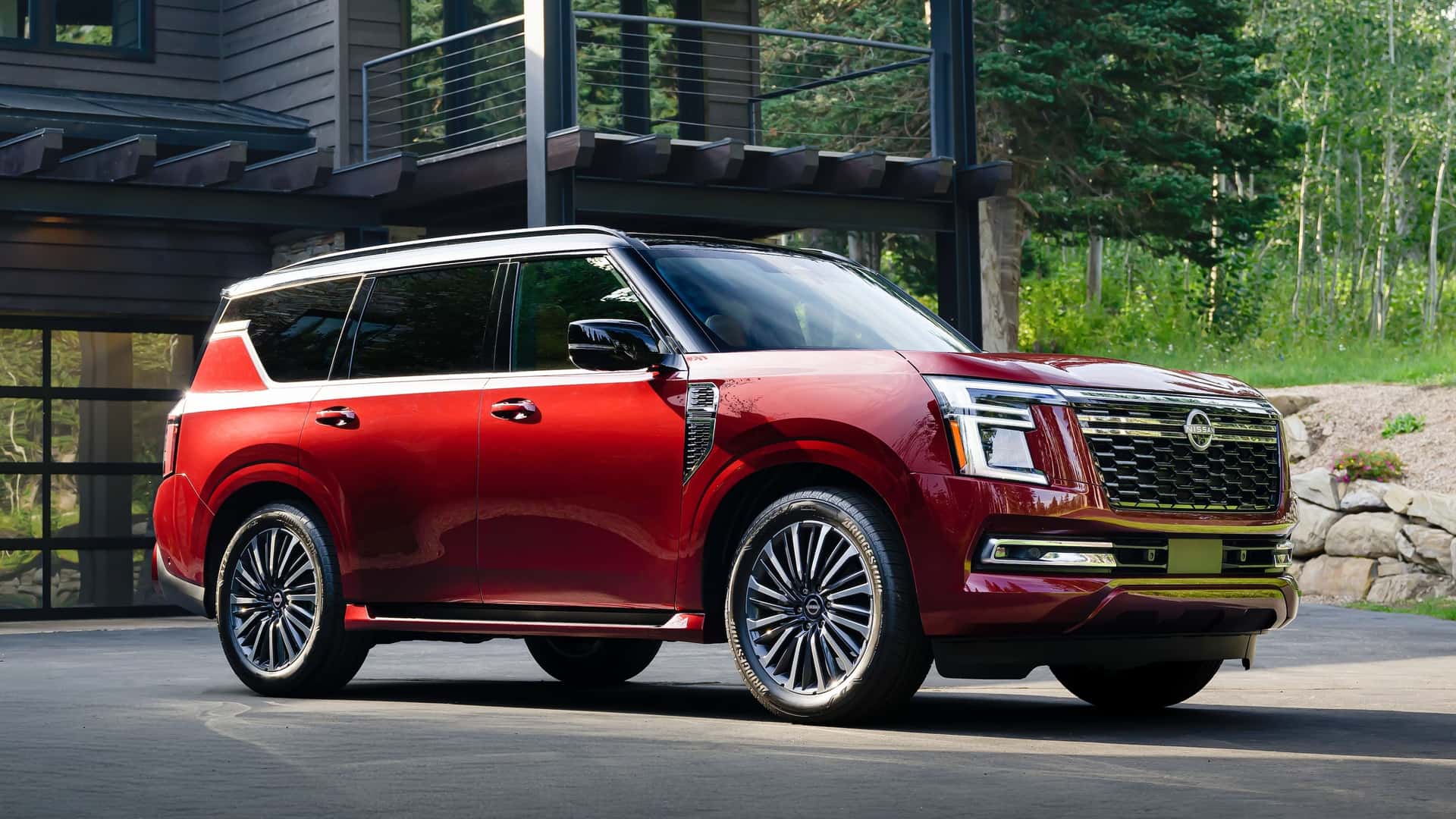
Fuel economy is slightly below average for the large SUV segment. Rear-wheel-drive versions are rated at 16 mpg city and 20 mpg highway, while four-wheel-drive models lose one mpg on the highway.
The Pro-4X trim posts the lowest efficiency numbers at 15 mpg city and 18 mpg highway. Although it won’t win any awards for efficiency, these figures are about what you’d expect from a brawny, three-row SUV.
Inside, the Armada has undergone a major transformation. The cabin is far more modern and upscale than before, with notable improvements in materials, design, and technology—especially in upper trims.
Build quality is solid throughout, with details like quilted leather seats and metal trim adding to the luxury feel. Depending on seating configuration, the Armada can accommodate seven or eight passengers.
The first two rows offer generous headroom and legroom, and the third row is spacious enough for adults on shorter rides, though it’s better suited for children on long trips. Cargo space isn’t a standout feature, but it’s sufficient for most needs, with 20.4 cubic feet available behind the third row and a maximum of 97.1 cubic feet with all rear seats folded.
When it comes to overall value, the 2025 Armada sits slightly below average compared to rivals in the same class. This is based on its estimated total cost of ownership and pricing structure. Despite its generous features and premium upgrades, the cost may still be a stretch for some buyers looking at long-term expenses.
Safety-wise, the Armada hasn’t yet been crash-tested, but Nissan equips it with a robust suite of driver-assistance features. These include standard blind-spot monitoring, lane-keeping assist, and adaptive cruise control with stop-and-go functionality.
LATCH anchor points are available for second-row outboard seats, with additional tether anchors for the middle seat in the bench configuration or captain’s chairs setup. There’s also a tether for the center seat in the third row.
At the time of writing, no predicted reliability score is available for the 2025 Armada. However, critics have given it an 8.6 out of 10, a respectable rating that reflects a general consensus of approval among automotive journalists and reviewers.
Pricing for the 2025 Nissan Armada begins at $56,520 for the base SV trim. Standard equipment includes synthetic leather upholstery, a 12.3-inch touchscreen, and driver-assistance tech such as blind-spot monitoring.
Moving up, the SL trim starts at $62,970 and adds heated front seats, wireless device charging, a Klipsch premium audio system, and a surround-view camera. The Platinum trim, starting at $69,930, introduces leather seats, a panoramic sunroof, and larger screens.
Off-road enthusiasts might gravitate toward the Pro-4X, which begins at $73,740 and includes all-terrain enhancements, four-wheel drive, and adaptive air suspension. The top-tier Platinum Reserve is priced from $76,990 and offers features like massaging front seats and 22-inch wheels. Except for the Pro-4X, all trims can be upgraded to four-wheel drive for an additional $3,000.
For most buyers, the SL trim is the smart choice. While it carries a higher price than the entry-level model, it offers excellent value through its extensive list of standard features, including wireless charging, a premium audio system, and ProPilot Assist. It strikes the right balance between luxury, capability, and price—making it the best overall pick in the 2025 Armada lineup.
While newer models generally offer better technology and stability systems, design fundamentals like center of gravity and chassis construction still play a big role.
If rollover risk is a concern, opting for a modern unibody SUV with a low profile and advanced traction systems can greatly enhance your safety on the road.

